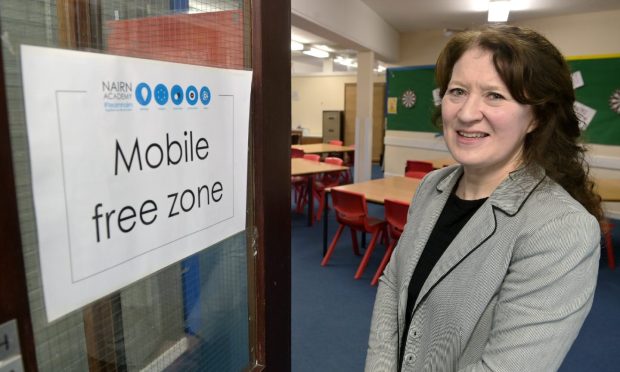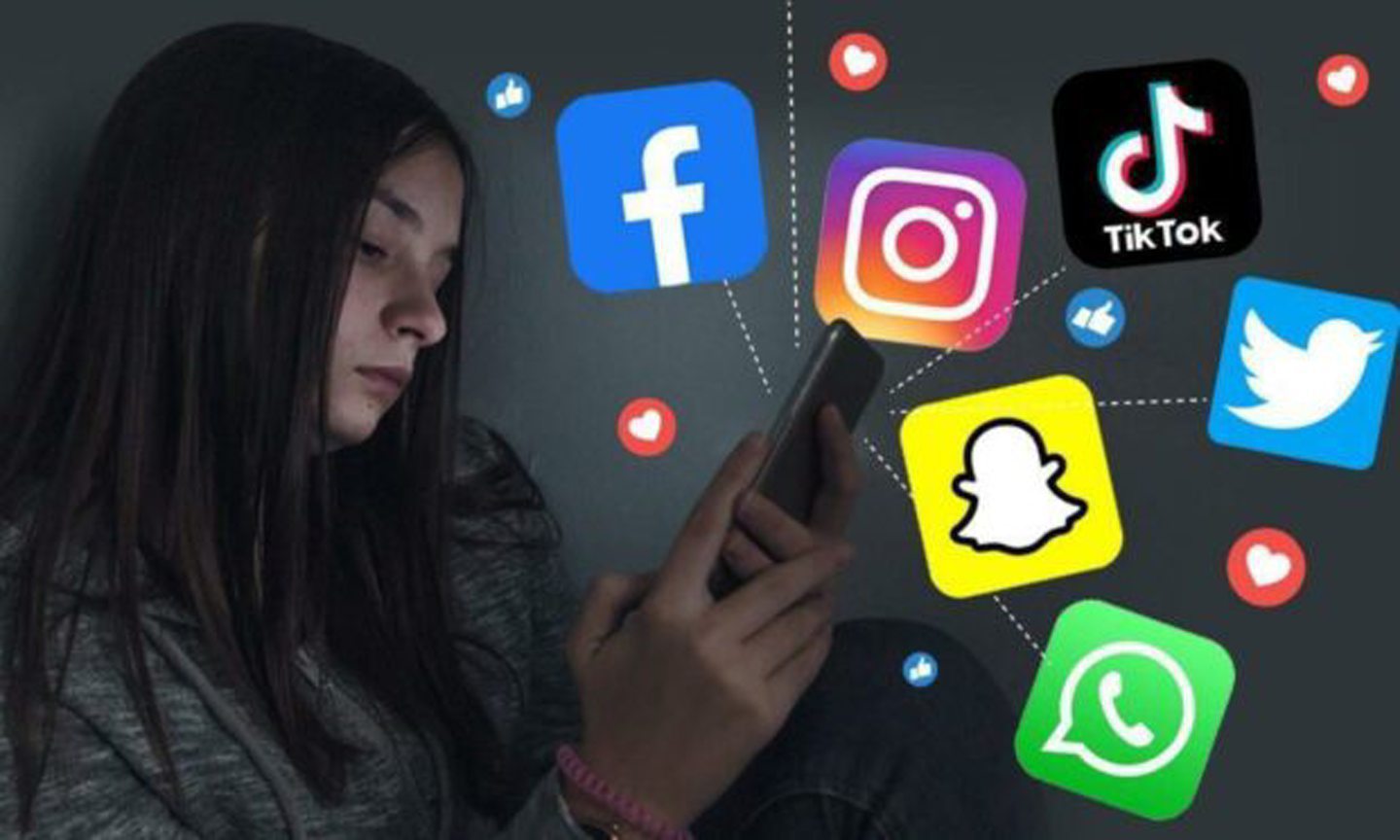The head teacher at Nairn Academy said the backing of parents was crucial in the school’s decision to ban mobile phones.
Since the beginning of this term, pupils have had to give up their phones on school premises – which now have to be switched off and kept in a bag, lockers or at home.
Head teacher Julie MacDonald said the decision “wouldn’t be popular”, but said she was cautiously optimistic that the end result will be a positive culture shift at the Highland school.
Nairn Academy joins growing list of schools taking action on mobile phones
The last year or so has seen much debate around the issue of mobile phones – particularly smartphones – in schools.
Fellow Highland school Grantown Grammar introduced a total ban on devices in May 2024, citing research which showed a correlation between smartphones and a negative impact on behaviour, learning and attainment.
In the north-east, Peterhead Academy was the first to put its head above the parapet, banning new S1 pupils from carrying mobile phones when they started at the school last August.
And the head teacher at Speyside High School in Moray, Patricia Goodbrand, told The P&J last year that she would support looking into a ban, amid “changes” in pupil behaviour.
In August last year, the Scottish Government introduced new guidance giving head teachers the authority to ban devices in schools.
There is a sense that parents are starting to catch up with the technology, and are now mobilising to safeguard the next generation from the harms of smartphone use.
Parents, staff, pupils, and research all consulted before banishing phones
Nairn Academy can’t be accused of rushing into a ban, having consulted parents, staff and even pupils, as well as consulting recent research on the impact of smartphones on young people.
Mrs MacDonald said: “Technology is a really important part of our lives now, and things like Chromebooks make learning accessible for all our young people, and allow them to engage with that technology.
“But we’ve found that in terms of mobile phones, it’s swung too far the other way in terms of the impact and the increasing misuse we’re seeing.”
The school’s mobile phone policy up until Christmas was that phones should be switched off and in bags, but were allowed during social time.
However, this proved ineffective.
“Increasingly we started to see the phones out in hands, tucked down jumpers, in pockets or whatever, and then used out and about between classes,” said Mrs MacDonald.
“People who were accessing their phones were then inevitably late to class, and then distracted in class by whatever they’d seen on their phones.
“We were experiencing more cases of online bullying, inappropriate photographs, notifications going off in class.
“So it was becoming apparent that the learning was being impacted.
“A lot of our teachers, like myself, are also parents. So we see this from the other side as well – the addiction and the fixation on smartphones.
“We realised that mobile phones were conflicting with our values.”
She added: “It was impacting on social interactions. People just weren’t speaking to each other, and when they were, it was via text or WhatsApp or Snapchat. And it wasn’t terribly positive.”
Parents say mobile phone ban makes school ‘safer’
When it comes to smartphones in schools, much talk centres on pupil safeguarding.
But as Mrs MacDonald explained, staff safeguarding is also an issue.
“Over the last two terms, we had situations where staff were filmed while they were at work,” she said.
“Those images were then distorted and posted on TikTok.
“Then you’ve got all the comments alongside that, and staff have no right of reply there.”
Nairn Academy parent council said they were “fully supportive” ban.
A parent council representative said: “It has been very brave of the school to take such an active step in helping our young people to overcome the control that mobile phones have on them.”
They added that the new policy was making the school “safer”.
Mrs MacDonald said parents at Nairn Academy had contacted the school before the ban, citing fears over the impact mobile phones were having on their children.
She said: “Parents were sharing concerns with us, and saying that they were struggling with phones, and were concerned about the addictive nature of them and the lack of positive relationships they were creating.
“Our parent council have been a fantastic support and sounding board.
“They wanted help, and someone to make the decision for them.
“There were rumblings before last summer that our current policy wasn’t working.
“And then in August there was the new guidance introduced by the Scottish Government.
“That was really our trigger to work with the parent council and pupils to try and get something that was more conducive to a better, positive environment in school.”
‘Many cited anxiety levels’
The head teacher said the school was “braced” for the new policy being “unpopular” with pupils.
“But we’d done our review, we’d done our homework.
“And our parent council were really good. I think if this was just coming from the school it might have been different, but the backing and support we had from them – because they were on the journey with us – was a huge help.
“The overwhelming feeling from families was that they were aware of the impact of mobile phones.
“The lack of socialising, the effect on wellbeing and levels of anxiety – many cited anxiety levels and this kind of need to constantly be in touch.”
Pupils were, however, consulted about the ban beforehand.
“We did speak to pupils and the pupil council. They were keen to look at solutions other than a ban, if I’m being honest.
“They suggested things like having a jar to put them into when they go into the classroom. But when we talked them through it, they realised that that just wasn’t viable.”
Teachers also giving up mobile phones
And what goes for pupils goes for staff too, with teachers at Nairn Academy setting an example and learning to live without their phones.
“The staff are role modelling as well,” said Mrs MacDonald.
“So simple things like taking photographs of activities or whatever and then posting that on Instagram. Rather than do that on our phones, we’re now in the process of purchasing digital cameras.
“Staff who are parents have also said to their kids’ schools to contact them on the school number rather than their mobiles.
“So the staff have had to adjust too. And actually some staff are saying they’re quite enjoying having that disconnect.”
While it’s too early to say what the long-term impact of the mobile phone ban will be at the school, Mrs MacDonald is confident that, with a little patience, it will pay dividends.
“We’re only a few weeks in, so I’m cautious about saying how much things like behaviour have improved,” she said.
“We realise that is going to be a culture shift.
“There’s research out there about how long it takes to break a habit, so we know we’re going to be on a bit of a journey.
“What I would say is that there’s been a resounding success of pupils buying in to this. That has been really positive.”
‘There’s a bit more of a buzz about the place’
She added: “During Covid, gaming was really the only way for my own kids to socialise.
“But it seems that that has grown to the point where we need to pull that back a bit.
“And it’s lovely seeing the conversations in the corridors coming back, there’s a bit more of a buzz about the place.”





Conversation